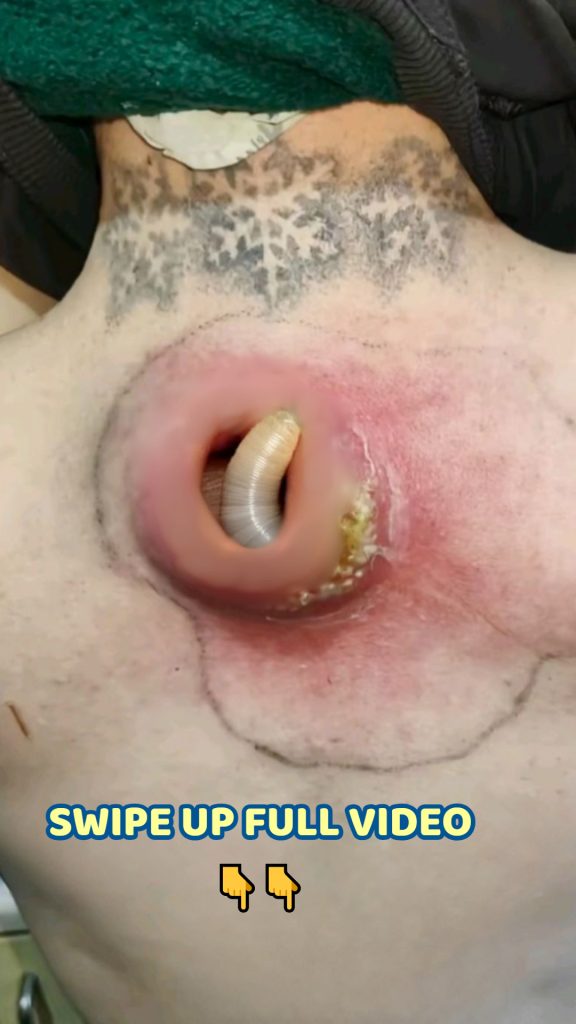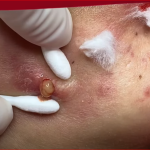🔍 1. Use a Gentle, Non-Comedogenic Cleanser
-
Goal: Remove oil, dirt, and makeup without irritating the skin.
-
Recommended Ingredients:
-
Salicylic acid (BHA): Exfoliates inside the pore.
-
Glycolic or lactic acid (AHA): Exfoliates surface dead skin cells.
-
-
Example Products:
-
CeraVe Renewing SA Cleanser
-
Neutrogena Oil-Free Acne Wash
-
📚 Reference: American Academy of Dermatology (AAD)
🧴 2. Apply a Chemical Exfoliant (2–3x per week)
-
BHA (Beta Hydroxy Acid): Salicylic acid dissolves oil inside pores.
-
AHA (Alpha Hydroxy Acids): Glycolic acid helps shed the top skin layer.
-
Avoid: Harsh physical scrubs that can irritate or damage skin.
🔍 Best For: Oily or combination skin with frequent clogged pores.
🌙 3. Use a Retinoid at Night
-
How it helps: Boosts cell turnover, prevents clogged pores, and reduces oil production.
-
OTC Option: Adapalene (Differin) 0.1%
-
Prescription Options: Tretinoin, Tazarotene
⚠️ Note: Start slow (2–3 times a week), then build up to daily use to avoid irritation.
📚 Reference: Journal of the American Academy of Dermatology
🎯 4. Consider Clay or Charcoal Masks (1–2x/week)
-
Effect: Draws out oil, dirt, and impurities.
-
Look for: Kaolin clay, bentonite clay, activated charcoal.
-
Examples:
-
The Ordinary Salicylic Acid 2% Masque
-
Innisfree Super Volcanic Clay Mask
-
🧼 5. Use Pore Strips Sparingly
-
Short-term solution: Removes surface blackheads but doesn’t prevent them.
-
Overuse warning: Can irritate or damage sensitive skin.
💊 6. Professional Treatments
-
Chemical Peels: Glycolic, salicylic, or lactic acid peels.
-
Extractions: By a licensed dermatologist or esthetician.
-
Microdermabrasion: Gently exfoliates top skin layers.
-
Laser & Light Therapy: Kills acne-causing bacteria and reduces oil.
📚 Reference:
🚫 What to Avoid
-
Overwashing or using harsh scrubs
-
Heavy or oily makeup/skincare products
-
Popping or squeezing blackheads (can lead to scarring)
✅ Preventing Future Blackheads
-
Stick to a consistent skincare routine.
-
Wash your face after sweating.
-
Use non-comedogenic products.
-
Change pillowcases and phone screens regularly.
1. Salicylic Acid (BHA) – The Gold Standard for Blackheads
Why It Works:
Salicylic acid is a beta hydroxy acid (BHA) that penetrates deep into pores, exfoliating from within and dissolving the oil and debris that cause blackheads.
Scientific Support:
A study published in Biomedical Dermatology demonstrated that both commercially available and freshly prepared salicylic acid peels significantly reduced the number of comedones (blackheads), with the freshly prepared peel showing quicker and more pronounced results .
Usage Tips:
-
Apply a 1–2% salicylic acid solution or gel to affected areas.
-
Use 2–3 times per week to start, gradually increasing frequency as tolerated.
-
Follow with a non-comedogenic moisturizer.
2. Retinoids – Promote Skin Cell Turnover
Why They Work:
Topical retinoids, such as adapalene (Differin), tretinoin, and tazarotene, accelerate cell turnover, preventing pores from becoming clogged with dead skin cells.
Scientific Support:
According to Verywell Health, retinoids are effective in treating comedonal acne (blackheads and whiteheads) by promoting the exfoliation of dead skin cells and encouraging the production of new cells .
Usage Tips:
-
Start with a pea-sized amount applied to clean, dry skin in the evening.
-
Use 2–3 times per week initially, increasing frequency as tolerated.
-
Apply sunscreen during the day, as retinoids can increase sun sensitivity.
3. Clay Masks – Absorb Excess Oil and Impurities
Why They Work:
Clay masks containing ingredients like kaolin and bentonite are known for their oil-absorbing properties, helping to reduce excess sebum and clear pores.
Scientific Support:
A study published in Skin Research and Technology found that a clay mask enriched with kaolin, bentonite, and other ingredients significantly reduced both open and closed comedones over a 4-week period .
Usage Tips:
-
Apply a thin layer to the face, avoiding the eye area.
-
Leave on for 10–15 minutes, then rinse with lukewarm water.
-
Use 1–2 times per week, depending on skin tolerance.
4. Avoid Physical Exfoliants and Manual Extraction
Why to Avoid:
Physical exfoliants and manual extraction can irritate the skin, potentially leading to inflammation, scarring, or the spread of bacteria.
Expert Advice:
Dermatologists recommend against squeezing or picking at blackheads, as it can worsen the condition and cause scarring .
5. Professional Treatments – For Persistent Cases
Options Include:
-
Chemical Peels: Use of acids like salicylic or glycolic acid to exfoliate the skin.
-
Microdermabrasion: A procedure that exfoliates the skin to remove dead skin cells.
-
Laser Therapy: Targets sebaceous glands to reduce oil production.
Expert Advice:
For persistent or severe blackheads, consulting a dermatologist for professional treatments is recommended .
6. Preventive Measures – Maintain Clear Skin
-
Consistent Skincare Routine: Cleanse twice daily with a gentle, non-comedogenic cleanser.
-
Non-Comedogenic Products: Choose makeup and skincare products labeled as non-comedogenic.
-
Avoid Touching the Face: Minimize touching your face to reduce the transfer of oils and bacteria.
Summary
Effectively treating blackheads involves a combination of proper skincare practices and targeted treatments:
-
Salicylic Acid: Penetrates pores to dissolve oil and debris.
-
Retinoids: Accelerate cell turnover to prevent clogged pores.
-
Clay Masks: Absorb excess oil and impurities.
-
Professional Treatments: Considered for persistent cases.
By incorporating these treatments into a consistent skincare routine and following preventive measures, you can effectively manage and reduce blackheads.
🔍 Causes of Blackheads
| Cause | Description |
|---|---|
| Excess oil (sebum) | Overactive sebaceous glands produce too much oil. |
| Dead skin buildup | Improper exfoliation leads to clogged pores. |
| Hormonal changes | Increase oil production (common in puberty or menstruation). |
| Pore congestion | From makeup, sunscreen, or heavy skincare products. |
| Improper cleansing | Not removing dirt or makeup thoroughly. |
✅ Solutions & Treatments for Blackheads
🧴 1. Daily Cleansing
-
What to Use: Gentle, non-comedogenic cleanser with salicylic acid (BHA).
-
How It Works: BHA penetrates and dissolves oil in pores.
-
Example Products:
-
CeraVe Renewing SA Cleanser
-
Neutrogena Oil-Free Acne Wash
-
-
Reference: American Academy of Dermatology
🧪 2. Topical Treatments
| Ingredient | Action | How Often | Examples |
|---|---|---|---|
| Salicylic Acid (BHA) | Exfoliates inside the pore | 1–2× daily | Paula’s Choice BHA Liquid |
| Glycolic/Lactic Acid (AHA) | Exfoliates skin surface | 2–3× weekly | The Ordinary Glycolic Toner |
| Retinoids (e.g. Adapalene) | Increases cell turnover | Nightly | Differin Gel 0.1% |
-
Reference: Verywell Health – Retinoid Guide
🧼 3. Weekly Deep Treatments
✅ Clay Masks
-
What They Do: Absorb oil and draw impurities from pores.
-
Frequency: 1–2× weekly.
-
Ingredients to Look For: Kaolin clay, bentonite.
-
Example: The Ordinary Salicylic Acid 2% Masque
-
Reference:
✅ Charcoal Masks
-
Function: Detoxify and unclog pores.
-
Use Caution: May dry skin if used too often.
🩺 4. Professional Treatments (For Stubborn Blackheads)
| Treatment | Description | Provider |
|---|---|---|
| Chemical Peels | AHA/BHA applied to exfoliate deeply | Dermatologist |
| Comedone Extraction | Manual removal using sterile tools | Dermatologist or esthetician |
| Microdermabrasion | Mechanical exfoliation | Dermatology clinic |
| Laser Therapy | Reduces oil production & pore size | Dermatology clinic |
-
Reference:
🛡️ Prevention Tips
-
✅ Use non-comedogenic skincare and makeup.
-
✅ Cleanse face twice a day.
-
✅ Change pillowcases 2x/week.
-
✅ Avoid touching your face.
-
✅ Remove makeup thoroughly before bed.
🧠 Final Thoughts
Blackhead management is not about quick fixes but a consistent routine:
-
Salicylic acid is your daily go-to.
-
Retinoids offer long-term prevention.
-
Clay masks and professional treatments enhance results.


